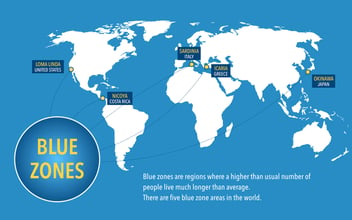

A cognitive assessment, also known as a cognitive screening or cognitive test, is an exam that helps physicians evaluate and monitor cognitive function. They're designed to detect signs of cognitive impairment and help triage patients for further evaluation for Alzheimer's disease (AD) or other dementias.
The First Cognitive Test: Clock Drawing
The Clock Drawing Test, CDT, was one of the first cognitive assessments introduced, and is still widely used today. This test involves drawing the face of a clock, filling in all of the details, and ultimately showing the hands to reflect a time of 11:10. These directions sound simple enough but if you think about all the cognitive skills that go into these tasks: visuospatial skills, auditory comprehension, concentration, memory, and executive function, you realize it’s not as easy as you thought.
The CDT, originally used to assess soldiers for apraxia, was developed in 1915, making it over 100 years old! Throughout the 20th century it morphed into a common cognitive screening tool for older adults or adults who may have dementia. Over the last several decades, many different scoring methods have been developed.
The test is considered a good predictor of moderate and severe AD but is not sensitive to early cognitive changes. Other drawbacks of the CDT include more than one approach to scoring, making it challenging to determine the most useful and accurate one. Also, the future usefulness of this simple test is in question as the digital generation ages and has less and less exposure to old-fashioned analog clocks.
Pen-and-Paper Cognitive Tests of 1970s-2000s
The next cognitive screen tool to become available to clinicians was the Mini Mental Status Exam, or MMSE, first published in 1975. This 11-question screening tool takes 12 to 15 minutes to administer and score. It involves a number of tasks including counting backwards by 7s and copying a design. Although it was once considered the gold standard of cognitive tests, it is not widely used today because of associated fees, time to administer and score, and lack of sensitivity and specificity compared to newer tests, especially with the earlier stages of impairment. It's also a poor choice for older adults with low education or who are not fluent speakers.
The Mini-Cog, developed in 2000, combines the CDT with a delayed three-word recall test. This test takes around 3 minutes to administer, is free to use, and some studies have found it to be both more accurate than the MMSE and less subject to education bias. However, it’s still subject to the shortcomings of the CDT.
In 2005, the Montreal Cognitive Assessment, commonly known as MoCA, was introduced. Like the MMSE, it's a longer assessment (around 12 to 15 minutes) that includes a CDT exercise, but is also considered to have greater sensitivity and specificity. On the other hand, it may be a poor choice for diverse populations.
The Saint Louis University Mental Status, or SLUMS, is a cognitive assessment developed in 2006 that's free to use. It includes 11 questions including simple math, fact recall, naming animals, and a CDT. While not as widely used, or well known as the MMSE, it is a more thorough test with greater sensitivity, which means the SLUMS test can better diagnose early dementia, but requires 10 minutes or more to administer and manually score. It features different scoring for different education levels.
The Future of Cognitive Testing
With the number of people with Alzheimer’s disease expected to nearly triple by 2060, it’s imperative for primary care physicians to have access to quick and reliable cognitive screening tools that can become a routine fixture of annual physicals for older patients. Additionally, these tools need to be sensitive enough to detect cognitive impairment in the early stages when Intervention is most effective.
While the variety of available cognitive assessments offers physicians options, the traditional pen-and-paper tests draw similar complaints:
- They require a lot of training and are often inconsistently administered by teams.
- Scoring is often complicated and subjective.
- The tests are too cumbersome and time consuming to use in jam-packed clinic visits.
- Difficult to monitor patient performance over time.
The future of cognitive assessments in a digital world calls for digital solutions that integrate with electronic health records and are quick, easy to use, objective, and clinically validated.
Our Approach
Neurotrack’s Cognitive Health Suite offers a flexible digital approach. It starts with Symbol Match, a 3-minute, first-line cognitive screening, which enables providers to quickly detect cognitive impairment remotely or during an Annual Wellness Visit. Patients who score low can complete a short follow up exam right away (to boost specificity and provider confidence), or in a follow-up Cognitive Care Planning visit, which gives providers additional detail and greater confidence to aid in diagnosis. Neurotrack's exams are designed to maximize accessibility, minimize cultural and educational bias, and are easy to monitor over time.
In general, digital screening solutions are standardized and score instantly, eliminating manual tallying and subjective interpretation. They can also reduce burden on healthcare teams with only minimal training required to administer. Many (like Neurotrack’s) are patient-led and can even be taken at-home prior to a visit, enabling screening and monitoring at scale without squeezing tight schedules further.




